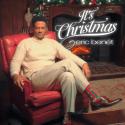Combine four super-talents, masters of their instrument, and you might well expect a battle of egos or a clash of modi operandi. Not least, as in the case of Les Égarés, a quartet made up from two seasoned duos – the virtuoso jazzers Vincent Peirani (accordeon) and Émile Parisien (soprano sax) on the one hand, and the entrancing creative partnership of Ballaké Sissoko (kora) and Vincent Ségal (cello) on the other. And yet…
In a glorious show, part of the London Jazz Festival, these four engage in the most captivating conversation – sometimes with humour, at other times with vertiginous speed; comfortable evoking the depth of heart-rending emotions and never shy of exploring new directions in the thrill of the moment. In a show that mixes fluid and often very beautiful compositions with moments of spontaneity and improvisation, there’s a great deal of solo glory, but these are musicians who listen as much as they sing out. They merge at times into a single organism, as if breathing from the same source. They remain, however, faithful to their individual personalities: the borderline show-off dexterity of Peirani as he chases cascades of notes on his accordeon; the more tempered but equally flashy sheets of sound produced by Parisien on the sax; the modesty, minimalism and soulfulness of cellist Ségal, who feels like the one who holds the whole together, and the filigree notes plucked with a miraculous sense of invention by Sissoko on his ancient instrument, the sacred kora, known for its ability to heal and transform.
The delicacy of the kora suffered a little from being lost in the mix, particularly at the start of the concert, but Sissoko had his moments, demonstrating that he’s probably the best kora-player in the world today, as anchored in Manding musical tradition as he's willing to venture creatively off-piste. His gentle character comes across: for all his extraordinary talent, he never upstages the others in the group. The same can be said of Vincent Ségal, who’s told me he starts every day with practising a Bach cello suite, while being very well-versed in the modes of Turkish music, the microtones of Asia, the rhythms of Latin America and jazz, and the stretching of the instrument’s capabilities in the 20th century avant-garde. He uses harmonics, lightly touching the strings with his bow, and strikes the strings as if he were playing a Brazilian berimbau. Never as boastful display, but always to add a texture to Sissoko’s gentle kora or in answer to a flourish from Parisien’s sax. The interaction between them – as has been revealed in their albums together – is a joy to behold.
Placed in the centre of the group, Sissoko and Ségal provide an anchor for the quartet, while the sax and accordeon, by nature more extrovert, make more noise. Émile Parisien has a tone reminiscent of the Belgian sax master Barney Wilen, sheets of sound that bring to mind John Coltrane, along with a breathy feel associated with the cool of Lee Konitz or Stan Getz, He plays seated, like his band-mates, but as he coaxes ever more exciting runs from his horn, he cannot hold back from rising off his chair, as is seeking some absolute of improvisational fire.
Peirani too cannot stop himself from dancing while seated, raising a leg in sync with the burning energy of his inventions. The fast runs he produces display exceptional dexterity and command of the keys, but sophisticated musicality as well. As with other jazz masters of the instrument like Richard Galliano, he avoids the clichés of valse musette, while sometimes playing humorously with the tropes. It would be easy to dismiss Peirani’s virtuosity as mere playing to the gallery, but his delightful hi-jinks reflect something of his essence. The charm and quality of this foursome comes from the combination of very different personalities, respectful of each other and much more: the enjoyment they experience by joining in a dance of apparent opposites, and overcoming them, is contagious. At a time when we’re drawn down into existential despair, faced with recurring cycles of hate, aggression and revenge, such a glorious exchange and merging of exceptional talents is undoubtedly a tonic for the soul.















Add comment